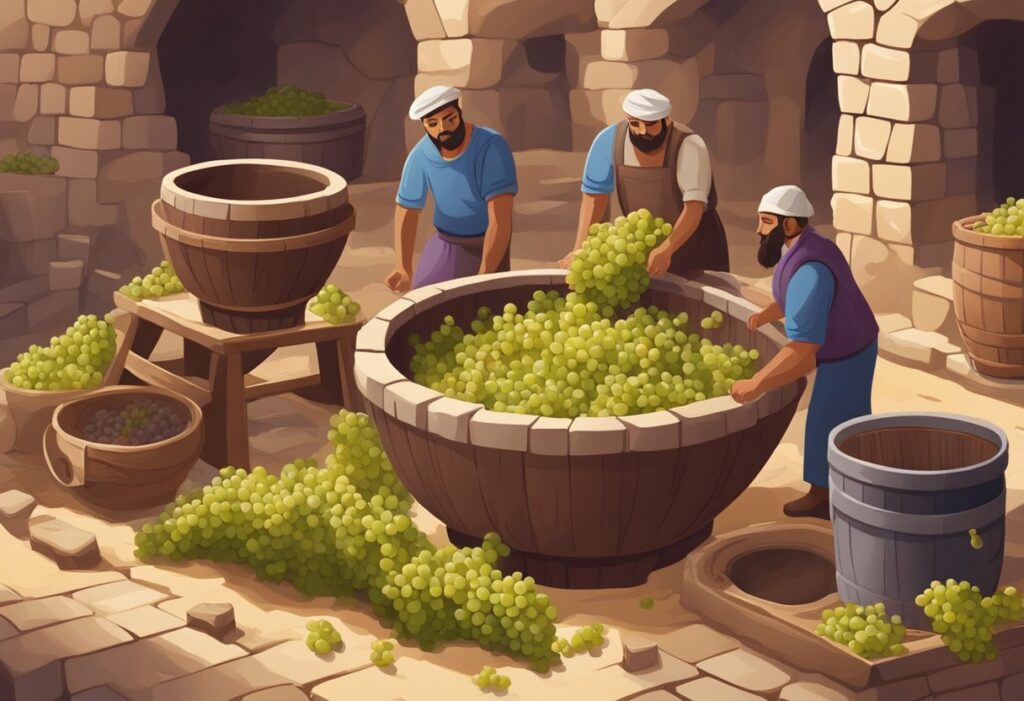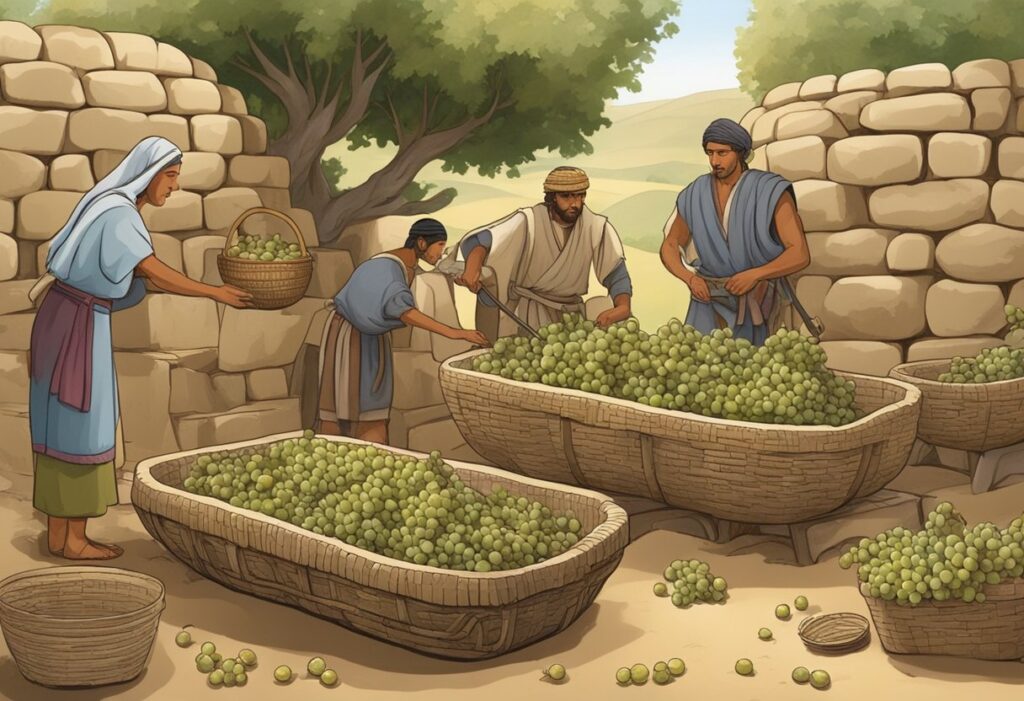Wine played a crucial role in shaping the cultural and social landscape of the Renaissance. With its deep roots in social gatherings, art, and daily life, wine became more than just a beverage. It symbolized celebration, sophistication, and even religious significance. Wine’s influence on the Renaissance was profound and multifaceted, affecting every aspect of life and culture.
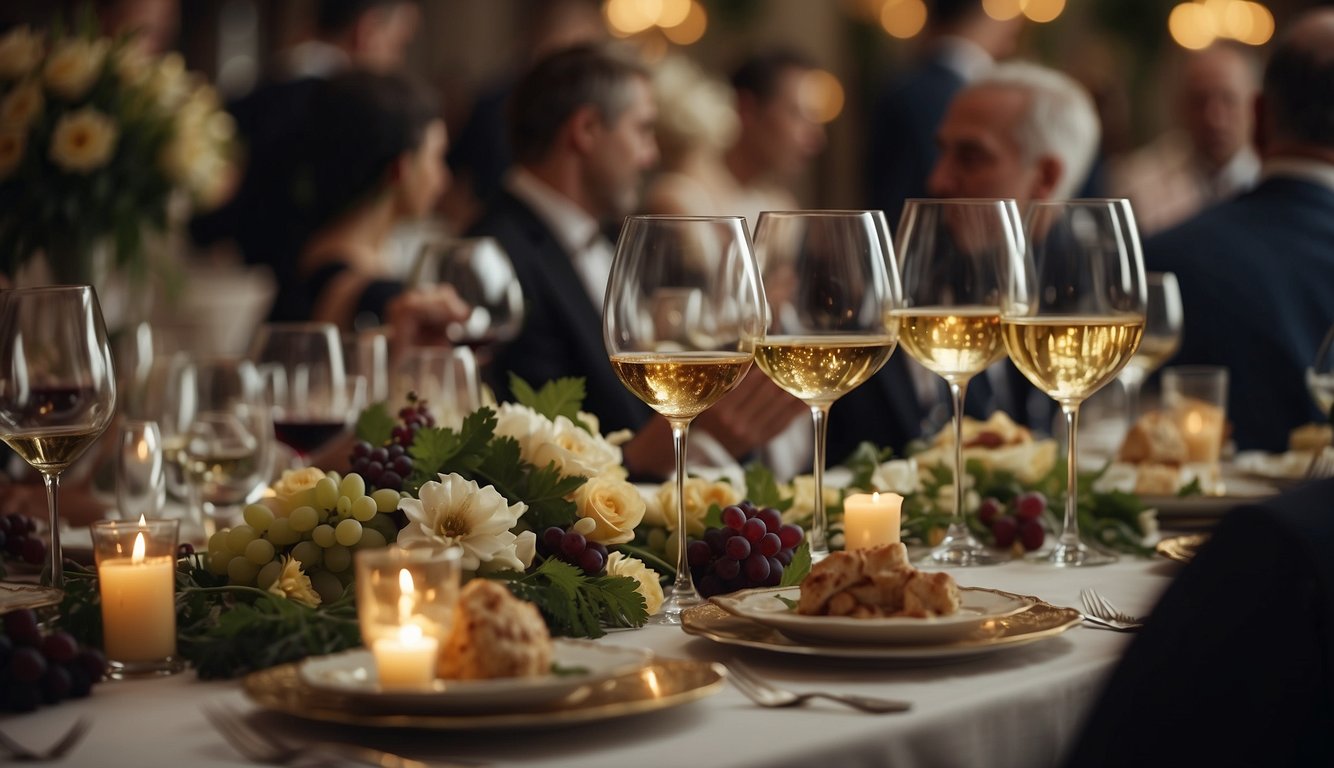
During the Renaissance, wine was often a focal point in social gatherings and feasts. Its presence encouraged unity and friendship, making it an essential part of community life. The way wine was celebrated and consumed reflected the era’s values of elegance and refinement. As trade routes expanded, the exchange of wine and winemaking techniques flourished, further embedding wine into the cultural fabric of society.
Art from the Renaissance period frequently depicted wine, symbolizing wealth, power, religious themes, and social status. This not only showed wine’s importance but also how it was intertwined with the era’s creativity and expression. The cultural significance of wine during this period is evident in its lasting legacy, from influencing modern winemaking to its continued role in celebrations and social traditions today. For more insights, explore how wine has shaped history, art, and society.
Historical Context of Wine During the Renaissance
During the Renaissance, wine was more than just a drink; it was intertwined with cultural and social norms. Its importance can be seen in various aspects of Renaissance society, from everyday life to religious practices.
The Role of Wine in Renaissance Society
Wine was a vital part of daily life and social gatherings. It was enjoyed by the nobility, scholars, and common people alike. In Italy and France, wine production flourished, recognizing wine as a symbol of status and sophistication. The influence of wine extended into trade and economics, with many regions becoming renowned for their unique vintages.
Monastic orders played a significant role in advancing viticulture techniques during this period. Monks diligently cultivated vineyards, ensuring the wine quality. Their practices laid the groundwork for modern winemaking methods. Wine’s economic significance also led to legal and trade developments, impacting society considerably.
The Symbolism of Wine in Religion and Mythology
Wine held a deep symbolic meaning in both religion and mythology. In Christianity, wine represented the Blood of Christ, playing a crucial role in the Eucharist. This sacrament, celebrated during mass, underscored wine’s sacred importance in religious ceremonies and reinforced its cultural prominence.
In addition, wine was strongly associated with Dionysus, the Greek god of wine and festivity. This connection highlighted wine as an embodiment of joy and celebration. Myths surrounding Dionysus often depicted wine as a divine gift, bridging the human and the divine. Thus, wine’s role in religion and mythology underscored its symbolic power, enhancing its presence in Renaissance culture.
By understanding these historical contexts, you can appreciate the multifaceted role wine played during the Renaissance, reflecting its deep cultural significance and enduring influence.
Viticulture and Winemaking Innovations
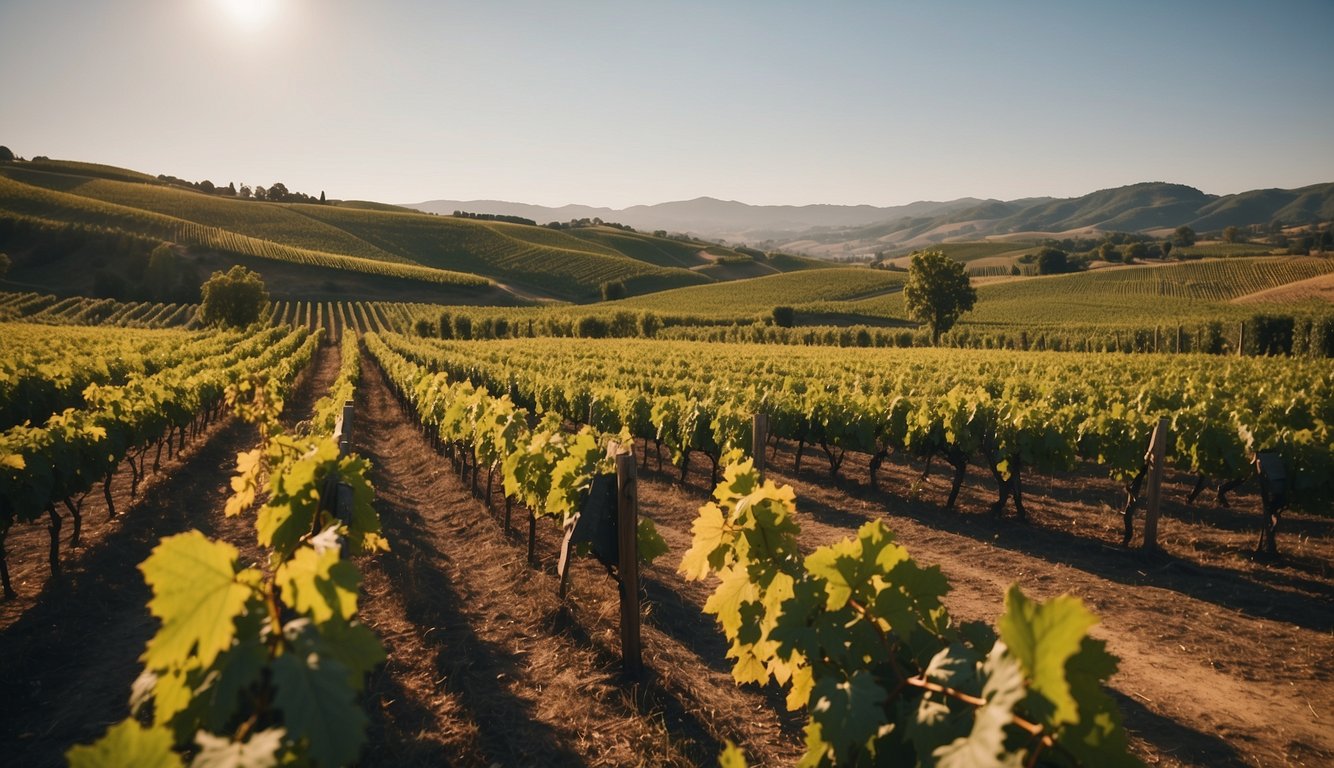
During the Renaissance, significant advancements were made in viticulture and winemaking. These innovations enhanced vineyard management and improved fermentation and preservation techniques.
Advances in Vineyard Management
In the Renaissance period, managing vineyards saw major transformations. Farmers developed better methods for planting, pruning, and harvesting grapevines. Techniques for maintaining soil health and controlling pests also improved. This era recognized the influence of climate and terroir on grape growth, leading to better site selection for vineyards.
Innovations like trellising systems helped support vines and improve sunlight exposure. Technology played a role in irrigation, making it possible to grow vines in regions with less rainfall. Growers began to understand the importance of terroir, influencing both the taste and quality of wine. You can learn more about these advancements from this link.
Innovation in Fermentation and Preservation Techniques
Winemakers in the Renaissance improved fermentation processes by experimenting with different types of yeasts. These experiments helped them achieve more consistent and higher-quality wines. Innovations in storing and aging wine, such as using wooden barrels, allowed for better preservation and aging of wine.
The use of glass bottles and cork stoppers became more widespread, thanks to advancements in science and technology. These methods prevented oxidation and contamination, maintaining the wine’s quality. Improved sealing techniques also helped in transporting wine over long distances, expanding the wine trade. Discover more about these techniques at this link.
Wine Trade and Economy
During the Renaissance, the wine trade grew tremendously, shaping economies and societies. Trade routes expanded, making wine a significant international commodity and impacting local economies deeply.
International Trade and Globalization of Wine
The Renaissance saw a major expansion in international trade. Wine became a sought-after product across Europe and beyond. Countries like Italy, France, and Spain were leaders in the wine trade. They exported their wines to other regions, helping spread their local varieties globally.
Italian wines, for example, gained popularity in European markets, including France and Spain. French wines began reaching broader audiences, influencing the tastes of European royalty and merchants. Spanish wines, particularly from regions like Rioja, made their way to markets in Italy and France, showing the interconnectedness of European trade.
With the expansion of exploration, the wine trade reached new territories. Portuguese and Spanish explorers introduced European wine to the Americas and Asia. This not only opened new markets but also led to the development of new wine-growing regions. Countries such as China began to develop an interest in wine, and over time, they started their own production, laying the groundwork for today’s global wine industry.
Impact on Local and Global Economies
The wine trade had substantial effects on both local and global economies. Locally, wine production provided jobs and stability. Regions known for their vineyards, like Bordeaux in France and Tuscany in Italy, saw economic growth due to the high demand for their products.
Local economies flourished with the establishment of vineyards and wineries. This growth contributed to the wealth of these regions, making wine production a significant economic driver. Places like Champagne in France became wealthy primarily due to their successful wine trade.
On a broader scale, the wine industry bolstered global economies. European nations competing in the wine trade saw a boost in wealth and trade influence. Wine exports became a major part of their trade balance, helping to establish and maintain their economic power globally.
In summary, the Renaissance wine trade not only shaped local economies but also played a vital role in the global economy, paving the way for today’s international wine market.
Cultural Expression and Artistic Influence
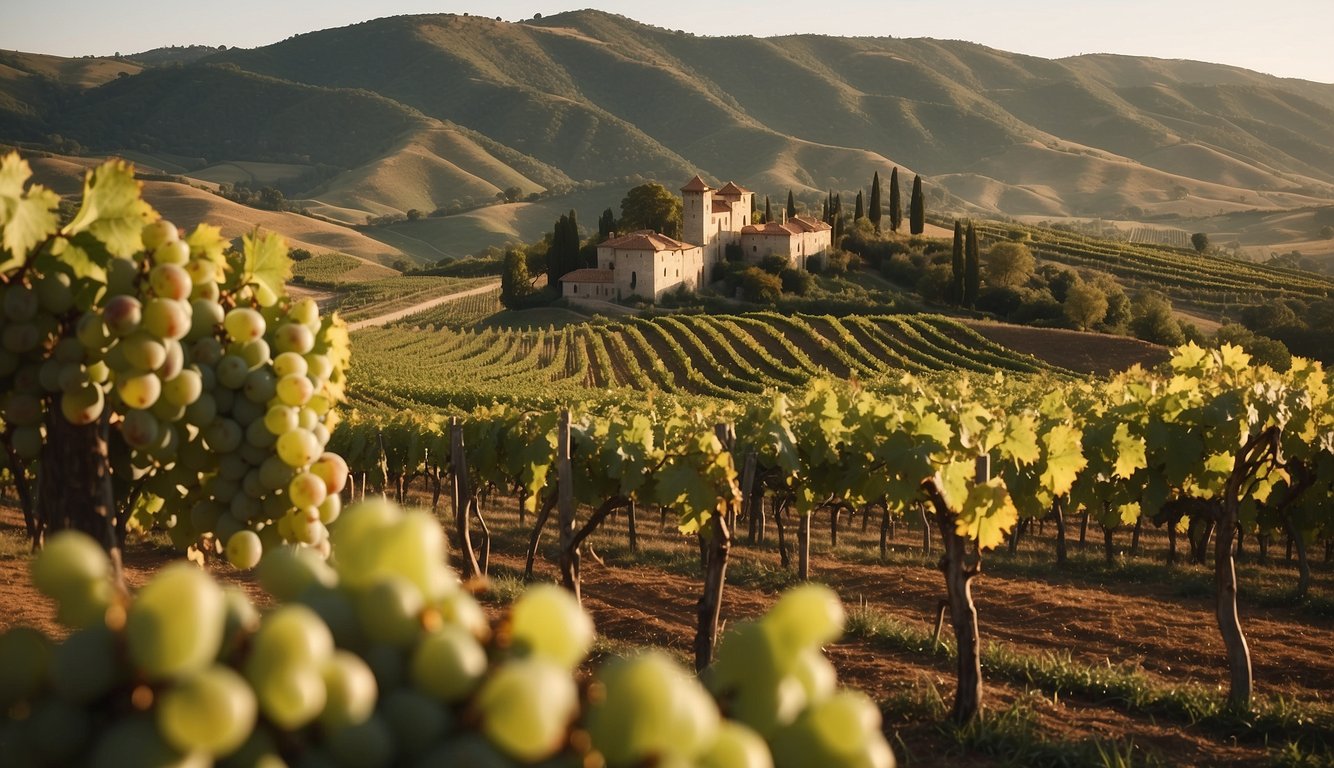
Wine held a significant place in Renaissance culture, symbolizing status, luxury, and tradition. It appeared in art and literature and was celebrated in daily life and festivities, providing a rich tapestry of meanings and societal roles.
Wine in Renaissance Art and Literature
In the Renaissance, wine was a recurring theme in both art and literature. Artists used wine to add depth to their works, often representing it as a symbol of celebration and opulence. It featured prominently in many Italian and French paintings, capturing moments of feasting and religious ceremonies.
In literature, wine was often depicted as a marker of status and luxury. Authors used it to highlight social and religious contexts, making scenes more vivid and meaningful. The works of poets and playwrights from this period often included references to wine, reflecting its importance in both high society and everyday life.
Representation of Wine in Festivities and Daily Life
During the Renaissance, wine played a central role in social events and daily routines. Festivities often included wine to signify joy and celebration, with grand feasts featuring an abundance of the drink. This practice was common in both Italy and France, where wine symbolized cultural richness.
In daily life, wine was a staple at meals, contributing to social bonds and tradition. It was not just a beverage but a symbol of heritage and community. The presence of wine in homes and at celebrations underscored its importance, making it a key element of Renaissance social life.
Renaissance wine art and wine culture’s impact help us understand how deeply intertwined wine was with society. Through these cultural expressions, wine reflected and shaped Renaissance life, leaving a lasting impact on both art and social practices.
The Social Fabric
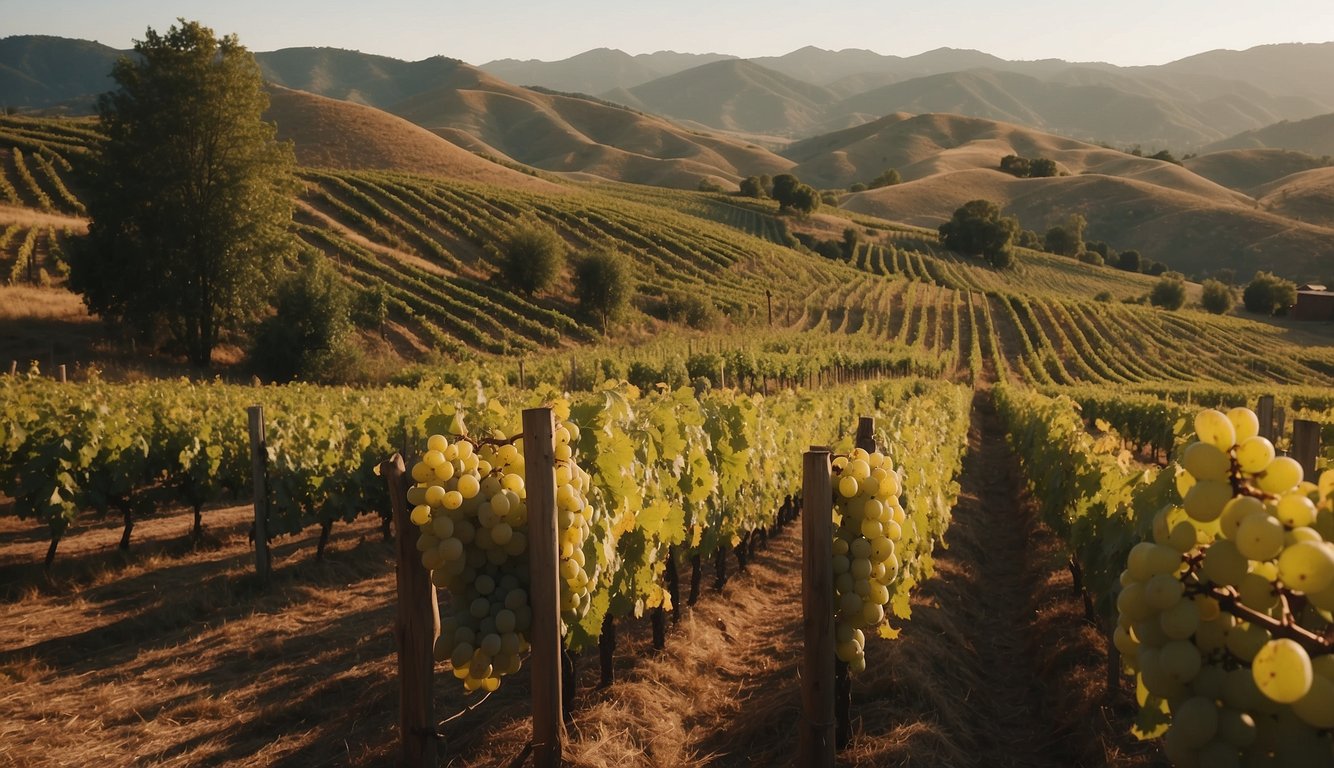
During the Renaissance, wine played a significant role in society. It influenced social classes and shifted public perceptions and tastes.
Wine’s Role in Defining Societal Classes
Wine represented more than just a beverage. It was a marker of social status and wealth. Fine wines were sought after by the upper classes, who could afford the best vintages from renowned regions.
Access to quality wine could distinguish the wealthy from the less affluent. Nobles and rich merchants showcased their status at lavish feasts, where wine flowed freely. On the other hand, peasants typically drank simpler, homemade wines, emphasizing the class divide.
Wine thus became a symbol of identity, reflecting one’s place in society. The cultural impact of this distinction shaped social dynamics and interactions across different social strata.
The Evolution of Public Perception and Taste
As you dive deeper into the Renaissance period, you’ll find that public taste and perceptions of wine evolved. Technological advances in viticulture improved the quality and variety of wines available.
Urbanization saw more people moving to cities, where they encountered diverse wine traditions. This led to a growing consumer preference for varied and refined tastes.
People began to view wine not just as a drink, but as an essential part of their cultural and social identity. Wine connoisseurship became a fashionable pursuit among the educated and elite. Societal influence and changing tastes led to the flourishing of wine culture, impacting laws and trade practices, as seen in the Renaissance winemaking techniques.
Wine’s social impacts were profound, affecting every level of society and contributing to the vibrant social fabric of the Renaissance era.
